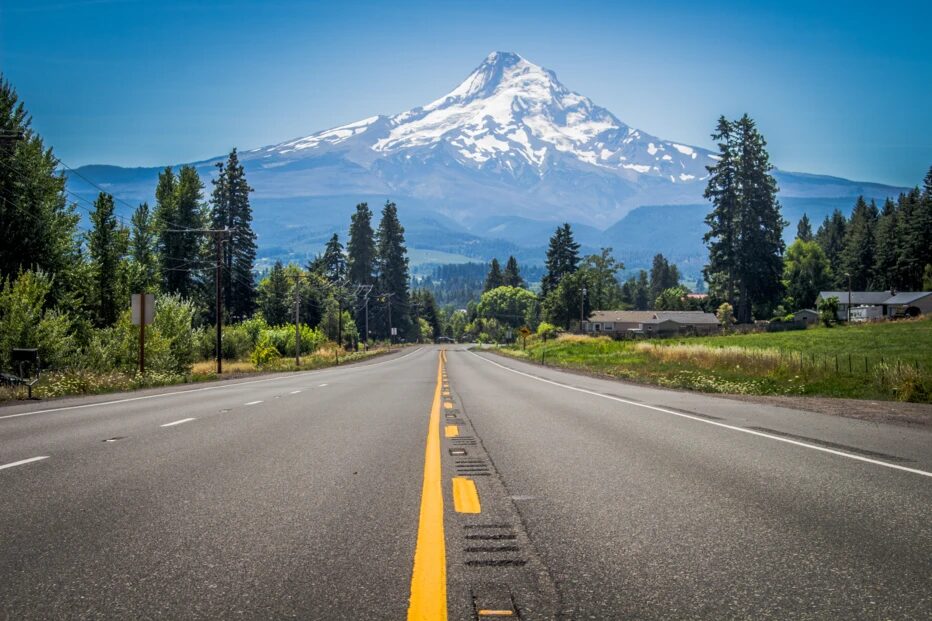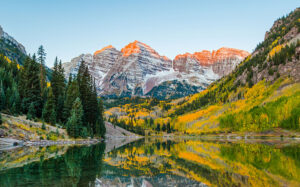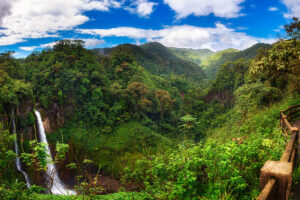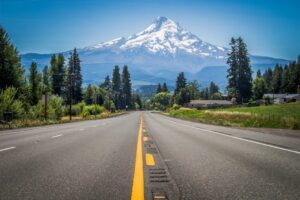A breathtaking 400-mile scenic drive through Washington State is capturing attention as one of America’s most spectacular road trips. The Cascade Loop traverses diverse terrain including over 300 glaciers, shimmering alpine lakes, golden larch forests, and picturesque mountain communities. This Pacific Northwest treasure offers travelers an unforgettable journey through landscapes often compared to the European Alps, making it an essential experience for road trip enthusiasts and nature lovers alike.
Washington’s Hidden Fall Foliage Destination
While the Pacific Northwest might not immediately spring to mind when considering autumn leaf-peeping destinations, Washington State delivers some of North America’s most dramatic fall scenery. The Cascade Loop exemplifies this seasonal beauty, showcasing golden larches, colorful deciduous trees, and crisp mountain air that transforms the landscape into a photographer’s paradise.
The route encompasses varied ecosystems and elevations, creating a dynamic road trip experience that changes dramatically as travelers progress through the loop. From coastal views to alpine wilderness, each section offers distinct characteristics that contribute to the journey’s appeal.
Planning Your Cascade Loop Adventure
Travel experts recommend allocating five days to complete the entire Cascade Loop, though the route’s flexibility allows for customization based on available time and interests. Adding extra days for hiking, photography, or exploring specific destinations enhances the experience significantly.
The loop’s circular design permits travelers to begin at any point, though most journeys start from the Seattle metropolitan area for logistical convenience. The route remains accessible throughout much of the year, with autumn offering particularly spectacular conditions for scenic driving.
Day One: Everett to Leavenworth – Gateway to the Cascades
The journey typically begins in Everett, a city north of Seattle that serves as the eastern gateway to the Cascade Loop. The drive toward Leavenworth introduces travelers to the Stevens Pass Greenway, where mountain panoramas emerge around every curve.
Notable Stops Along the Route
The historic Mukilteo Lighthouse provides maritime history and waterfront views, while Stevens Pass offers numerous scenic overlooks perfect for capturing mountain photography. Wallace Falls State Park deserves extended exploration, featuring cascading waterfalls surrounded by autumn foliage that creates stunning natural frames for the falling water.
Leavenworth: Bavarian Village in the Mountains
Arriving in Leavenworth feels like stepping into a European alpine village. This unique community embraced Bavarian architecture and culture during the 1960s, transforming itself into one of Washington’s most distinctive destinations. The town’s alpine-style buildings, authentic German restaurants, and craft breweries create an atmosphere unlike anywhere else in the Pacific Northwest.
The Wenatchee River flows through town, providing riverside walking paths where fall colors reflect in the water. Local boutique shops offer artisan goods, while numerous dining establishments serve both traditional German fare and contemporary Pacific Northwest cuisine.
Day Two: Agricultural Valleys and Western Heritage
Departing Leavenworth, the landscape transitions from mountain peaks to fertile agricultural valleys. This section showcases Washington’s productive farmlands and wine country before entering the state’s more remote regions.
Wenatchee Valley Wine Region
Known internationally as the Apple Capital of the World, Wenatchee Valley surprises many travelers with its thriving wine industry. The region’s unique microclimate and volcanic soil create ideal conditions for grape cultivation, producing award-winning wines that rival more famous wine regions.
Lake Chelan, one of the deepest lakes in the United States, provides recreational opportunities and spectacular scenery. The lake’s clear waters remain surprisingly warm for those brave enough to swim during autumn months.
Methow Valley’s Open Landscapes
Continuing into Methow Valley reveals expansive vistas where golden grasslands extend toward mountain ranges. This agricultural region maintains a distinctly Western character, with working ranches and small communities preserving frontier heritage.
Winthrop, the valley’s most photographed town, embraces its Old West roots with wooden boardwalks, false-front buildings, and Western-themed architecture. The community’s authenticity extends beyond aesthetics—local establishments including a converted schoolhouse brewery maintain the area’s historical character while serving contemporary visitors.
Day Three: North Cascades National Park – The American Alps
The North Cascades represent the Cascade Loop’s undisputed highlight, offering alpine scenery that rivals Switzerland’s famous peaks. This section deserves maximum time allocation for travelers seeking dramatic mountain landscapes and wilderness experiences.
Glaciers and Alpine Peaks
North Cascades National Park contains more than 300 glaciers—more than any other U.S. national park outside Alaska. These ice fields feed countless waterfalls and streams, creating the turquoise-colored lakes that define the region’s visual character.
Jagged peaks exceeding 9,000 feet create dramatic skylines, particularly around Washington Pass where granite spires pierce the sky. The North Cascades Scenic Highway threads through this mountainous terrain, offering continuous spectacular views from the comfort of your vehicle.
Golden Larch Phenomenon
The North Cascades host one of nature’s most spectacular autumn displays. Western larches, deciduous conifers unique to high-elevation forests, transform from green to brilliant gold during autumn. These trees create striking contrast against dark evergreen forests, appearing like golden beacons across mountain slopes.
Timing visits for peak larch season (typically late September through mid-October) rewards travelers with some of Washington’s most photogenic landscapes. The deciduous conifers concentrate in specific elevation bands, making certain viewpoints particularly dramatic during autumn.
Essential Park Planning
Visitors should prepare carefully for North Cascades exploration. The park’s remote character means no cellular service, fuel stations, or dining facilities exist within its boundaries. Travelers must carry sufficient supplies, including full fuel tanks, snacks, water, and emergency equipment.
Washington Pass Overlook stands among the Pacific Northwest’s most iconic viewpoints, with granite pinnacles framing mountain vistas that extend for miles. Ross Lake and Diablo Lake display surreal blue-green hues caused by glacial flour—finely ground rock particles suspended in the water.
Newhalem, the park’s primary developed area, offers visitor facilities including ranger stations where knowledgeable staff provide trail recommendations and current conditions. The Ladder Creek Falls Trail presents an accessible short hike through old-growth forest to a series of waterfalls.
Day Four: Coastal Transition to Anacortes
Descending from mountain wilderness, the landscape gradually transforms as travelers enter Skagit Valley’s agricultural flatlands. This fertile region produces significant quantities of vegetables and, during spring, hosts spectacular tulip displays that attract visitors worldwide.
Anacortes: Maritime Gateway
Anacortes occupies Fidalgo Island’s northern tip, offering coastal atmosphere and maritime heritage. The town’s working marina showcases the Pacific Northwest’s fishing industry, while waterfront restaurants serve fresh seafood including Dungeness crab, salmon, and shellfish harvested from surrounding waters.
Cap Sante Park provides elevated perspectives overlooking the San Juan Islands archipelago, Puget Sound, and surrounding mountain ranges. Clear days reveal Mount Baker’s snow-covered summit dominating the eastern horizon.
San Juan Islands Extension Option
Anacortes serves as the Washington State Ferries terminal for San Juan Islands routes. Travelers with additional time can extend their journey to explore these islands, known for orca whale populations, artistic communities, and relaxed island atmospheres.
Day Five: Island Highway and Loop Completion
The final day connects maritime islands with mainland completion. Deception Pass State Park features one of Washington’s most photographed structures—the Deception Pass Bridge spans a dramatic gorge where tidal currents create whirlpools between islands.
Whidbey Island’s Rural Character
Whidbey Island extends south from Deception Pass, offering rural farmlands, beach access, and small communities that maintain agricultural traditions. Roadside farm stands sell seasonal produce, while beaches provide opportunities for beachcombing and tidepooling.
A short ferry crossing from Clinton returns travelers to the mainland near Mukilteo, completing the circular journey back to Everett. This final leg offers reflection on the diverse landscapes experienced throughout the Cascade Loop.
Making the Most of Your Journey
Successfully completing the Cascade Loop requires balancing driving time with exploration opportunities. While possible to drive the entire route in less time, rushing diminishes the experience significantly. Taking time for short hikes, photography stops, and local dining creates richer travel memories.
Seasonal considerations influence route accessibility and scenery. Autumn offers optimal conditions with comfortable temperatures, fall colors, and fewer crowds than summer peak season. Winter conditions may close mountain passes, while spring brings wildflowers and rushing waterfalls from snowmelt.
Accommodation options range from campgrounds and rustic cabins to full-service resorts and boutique hotels. Advance reservations prove essential during peak seasons, particularly in popular destinations like Leavenworth and Winthrop.
Experiencing Washington’s Scenic Masterpiece
The Cascade Loop stands as one of America’s premier scenic drives, combining natural diversity with accessible route planning. Whether seeking outdoor adventure, photographic opportunities, or relaxing scenic drives, this 400-mile journey delivers memorable experiences that showcase the Pacific Northwest’s spectacular beauty.
From glacier-carved valleys to coastal islands, the route encompasses environments that took millions of years to form. Each curve reveals new vistas, each town offers unique character, and each season transforms the landscape in distinct ways.
At The Inspiring Insight, we celebrate journeys that connect travelers with natural wonders and regional culture. The Cascade Loop exemplifies road trips that inspire wonder while creating lasting memories, encouraging exploration of the remarkable landscapes that define the American West.




